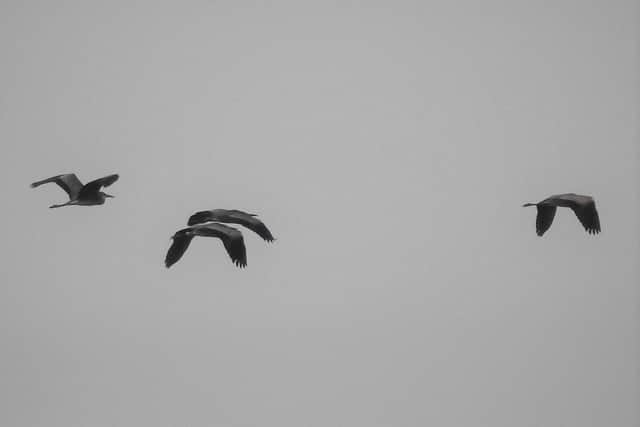Grey herons are on the move, says Sheffield wildlife expert


As water quality on local rivers has improved then the herons are taking advantage and their populations have grown.
With more birds then the local herons gather in communal roosts at chosen hotspots the later afternoon.
Advertisement
Hide AdAdvertisement
Hide AdOver Sheffield city centr,e you can now expect to see herons flying overhead with their lazy, heavy, deep wing-beats and sometimes they are now
in small, tight groups.
The rivers provide living, green corridors as arteries for urban nature and the herons are one species to benefit.
Others such as kingfishers and cormorants have also exploited the new opportunities.
In times past, herons suffered from persecution and particularly from pollution in watercourses generally and which by the 1970s had eradicated fish populations.
Advertisement
Hide AdAdvertisement
Hide AdHowever, they also declined though the impacts of persistent DDT pesticides that were widely used in agriculture from the 1950s to the 1980s.
These chemicals stopped predatory birds from breeding by causing their eggshells to thin and break.
Recovering populations of these species such as herons, kingfishers, cormorants, sparrowhawks, buzzards, and peregrines act as a barometer for environmental recovery as across the country rivers self-rewild.
Prof Ian D Rotherham, of Sheffield Hallam University, a researcher, writer and broadcaster on wildlife and environmental issues, is contactable on [email protected]
Advertisement
Hide AdAdvertisement
Hide AdFollow his Walk on the Wildside blog at ukeconet.org for more information.
A message from the Editor
In these confusing and worrying times, local journalism is more vital than ever. Thanks to everyone who helps us ask the questions that matter by taking out a digital subscription or buying a paper. We stand together. Nancy Fielder, editor.
Read more from Prof Rotherham:
Talking about hedgehogs, he says…
Hedgehogs love piles of twiggy rubbish under which they can nest or in winter, hibernate.
So, when rewilding your garden, it is worth using cuttings of woody shrubs and the like to form low, dry mounds which can be covered with green herbaceous material over the top.
You can buy a pre-made ‘hedgehog house’, but the brash pile is cheaper and equally or more tempting for would-be residents.